#poppy kernel
Explore tagged Tumblr posts
Text
Sunpop?
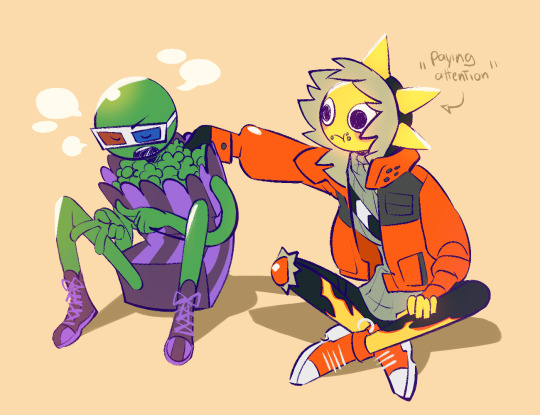

not really ship art, I just think they are silly together :]
#fortnite#art#sunspot#kernel poppy#im so sorry for the fortnite art jumpscare to my followers#i may or may not have more#my art
58 notes
·
View notes
Text

wanna be my boy best friend
7 notes
·
View notes
Text
UPDATED IMPERIAL WARDIN FOOD POST
(Note that many foods aren’t 1:1 with real world equivalents but will be labeled with their real world equivalent if it’s Basically the same thing in form/taste).
STAPLE DIETARY BASICS:
Maize is the most important staple grain throughout the majority of the region (and much of the northern hemisphere in general). It has been cultivated here for about two thousand years and some wild teosintes are native (can be found on both sides of the Mouth seaway), though it was not domesticated here and Probably originates close to modern-day Bur.
The main maize type grown here is comparable to field corn. It has a taste and texture resembling choclo, being starchy and somewhat chewy (the kernels are not as large though). Most strains are hybridized with wild teosintes, though mostly not by intentional cross breeding. Maize is usually consumed in nixtamalized form using lime. This is habitual, both as a matter of providing better nutrition and better taste, and plain corn tastes a bit unusual to the palate (though is used in some sweet preparations). Corn smut fungus is also intentionally allowed to propagate and is widely eaten, though consumption of fungi is otherwise rare.
Barley is a close second, and has been present in the region longer than maize. The landrace here is particularly hardy and tolerant of poor, dry soils, and it can be grown further from the alluvial soil that maize thrives best in. It has a lower yield compared to maize, however. This strain is a winter barley requiring periods of cold after planting to grow. This makes it valuable as a staple, being potentially the first crop ready in any given year (depending on conditions it might be harvested a few months before maize), though it does not fare well in sustained freezing temperatures and may fail in a bad winter. Some summer barley types are present but grown at a more limited scale; it's unclear whether these represent two separate introductions or a novel mutation.
Two types of yam are widely grown and very important to the diet, referred to as the red yam (regarded as the best in flavor, but more delicate) and the white yam (regarded as poorer, but a significantly hardier crop that can be grown throughout most of the year). Both are mild starchy root vegetables (not sweet potato), though the red yam has a richer flavor and is subtly sweet. Both are cultivars of the same plant, which may have been domesticated in this region.
Lentils and legumes are the other core cultivated part of the diet. Chickpeas and cowpeas are most widely grown, and often comprise the majority of protein in a person’s diet. The mung bean is a relatively recent crop adopted in trade, and is primarily grown in the wetter northwest.
Potentially available grains/fruits/vegetables/etc (regionally varies, not including some misc edible wild greens):
Rice, cabbage, lettuce, onions, garlic, chili peppers, peas, olives, koli (cactus-like fruiting plant), camiche (tree with edible seeds, seedpods, leaves, and flowers), stone pine, dates, anuje palm (produces edible sap), pistachio, figs, nara (lime-like orange citrus), melon (a mildly sweet, cucumbery variant with edible seeds), apples, pomegranates, breadroot (wild plant comparable to prairie turnip), dirruca (similar to an autumn olive), groundcherries, acorns, amaranth, wild mustard, and maga (root vegetable with a potato-y texture and cabbage-y taste).
Of these, cabbage (more specifically a cabbage-esque brassica cultivar, it's a little different), onions, garlic, chilis, olives (mostly in the form of olive oil), camiche, and koli are the most important staples.
Potentially available spices/herbs/flavorings (some native/long-naturalized, many originally obtained via trade and native grown, some exclusively imported):
Cumin, saffron, wild saffron, coriander, thyme, sesame, poppy seeds, sumac, chilis, a couple wild mints and sages, rose, hyssop, turmeric, ginger, and firebug (a small insect that can be dried and crushed to impart red coloration, though imparts very little flavor), bode (an aromatic wild plant used similarly to bay leaf).
Livestock:
Cattle are of utmost importance as livestock. They provide milk, blood, meat, leather, bone, dung for fertilizer and fuel, and labor. Aside from the obvious dairy, blood drawn carefully from live cattle is a common part of the diet (mostly used for sausages and soups), though actual slaughter occurs rarely as cattle are tremendously more valuable alive than dead. Bull testes are eaten fairly frequently as a byproduct of gelding, and are considered superior to those harvested from a slaughtered bull.
Horses produce milk, meat, fertilizer, and textiles. All horse types here show dual-purpose selection for wool and milk, their meat is of secondary importance. Horses are slaughtered more frequently than cattle, however, as they mature more quickly and breed more prolifically (usually giving birth to two foals at a time).
Fowl can be kept for eggs and meat. Domesticated chickens and ducks are widely kept, and the tarne pheasant was first domesticated here. Some wild ducks/geese and ibis are kept in semi-tame contexts to be easily harvested for meat and eggs.
Khait are rarely eaten (or milked for that matter) in the Wardi cultural sphere, though there are no outright proscriptions against their consumption in general. Their main utility is as mounts and beasts of burden, and slaughter is usually an act of desperation or an opportunistic use of an already dying animal.
Among the Wardinae or 'south Wardi' population, the salutachin dog type is kept for meat, which is a matter of minor cultural differences surrounding of taboos against eating animals considered 'scavengers' (a label applied subjectively) or potential maneaters. The name basically means ‘yam dog’, referring to their exclusively vegetarian diet of mostly yams/maize/barley. They're considered a delicacy and eaten mostly for weddings.
Chul aren't kept at very large scales (as they provide little while alive, save for manure) but are still present in many villages as a source of meat that is almost entirely self-sufficient and can essentially be fed on garbage. Scavenger taboos are not applied to their meat in spite of their notable propensity for scavenging (this is at least partly on the basis of them being hoofed animals), though their meat isn't particularly favored either (outside of just-weaned calves, which are considered delicious).
Beekeeping is a common practice, often as an extension of fruit farming. Bees are kept in clay pot hives and mostly utilized for honey and wax. Bee larvae are sometimes eaten after honey is harvested, but are but considered to be a 'peasant food'. Insects are otherwise extremely rare in the diet and only tend to be eaten out of desperation, though it's common to get some minor victories out of destructive locust swarms by eating them (still considered peasant food).
Alcohol:
The techniques for distillation are not present here, though alcohol content derived from high-sugar ferments can get fairly high. Most alcohol is fermented with naturally occurring wild yeasts and fungus on the surface of the fruits/grain rather than actively introduced yeasts, thus can produce highly variable results from batch to batch.
-Wine is consumed mixed on a near-daily basis, usually with water (though more fancy preparations may use rosewater or un-fermented fruit juice). Consumption of unmixed wine is usually reserved for semi-special occasions. Grapes are not grown here and all wines derive from other fruits, with date wine being the basic standard. Other fruit wines are common (kolis fruit being most popular and practical), and wines based on the fermentation of camiche flowers (with dried dates or honey to supplement) are traditional and part of mid-spring holidays. Most vinegars are made from further fermentation of wine.
-Grain-based ales made with barley are most common, though maize (or a combination of the two) is also utilized, as are a few wild grass seeds. The traditional ale style here uses malted grains which are dried before fermentation, with higher quality ales being dried and smoked over wood (camiche, apple, and oak being 'best quality'). A distinction is made between 'smoked ales' (selectively wood-smoked), 'dung ales' (refers to malts dried (not smoked) over standard dung fuel fires, though is sometimes a tongue in cheek description for any low-quality/cheaply made ale), and sun ales (sun-dried malts).
-Mead tends to be the highest ABV beverage consumed recreationally. The style of honey harvest introduces beeswax/bees/larvae into the ferment, which can result in a higher alcohol yield (due to the wax floating to the top and creating a more anaerobic environment late in fermentation). Mead is generally consumed watered down like wine, sometimes with milk/whey and often spiced. The same word is sometimes used to describe alcoholic beverages made with anuje palm syrup (usually distinguished as 'mead' and 'anuje mead'), though the two forms vary in taste substantially.
-Amenwematse: A special high ABV mead-ish drink made by fermenting maize, loads of honey, and a paste of boiled herbs + tobacco. It's considered essentially different from other alcoholic drinks via its ritualized production, and its consumption is reserved exclusively for religious purposes. It is used to assist in inducing trance states/gaining mental fortitude (and lowering inhibitions) for rites, particularly in cases in which one must be transformed (such as Odonii or Etadinii taking on the aspects of animals) and/or must undergo a harrowing task (such as being a teenage bullfighter who needs to bring down a wild bull aurochs with a small knife, and knows dying in the process is considered an acceptable outcome). It is intended to produce a mild altered state without actually dulling the mind or becoming inebriated (it's forbidden for non-ceremonial use and tastes pretty damn bad anyway, if you want to get plastered you just drink plain old unmixed mead or wine).
Fishing:
Most of the contemporary sedentary population is clustered around the coasts and rivers, and fish may provide most dietary protein in these contexts. Oily fish tend to be favored over whitefish overall, though the latter are preferred for soups. Shellfish are widely harvested and may play a major role in coastal commoner diets; they tend to be considered a low class food but lack the stigma of 'peasant/famine foods'. Spearhunting large marine reptiles is done by some coastal communities on a subsistence basis, but has no major industry surrounding it. Adult yotici (known to be kinda freaky and smart but not known to be sapient beings) are sometimes spearfished, though are among fish eaten with caution due to a potential for ciguatera poisoning.
Hunting:
Sport hunting is a pastime for nobility, but subsistence hunting is often important to the diet of inland pastoralists and is an opportunistic source of meat for agricultural peasants who will very rarely get to eat their own livestock.
Hare, rabbit, several gamebirds, gazelle, aurochs, buffalo, anara (semiquatic rodent), and nechoi (piglike animal) are the most common targets. Crocodiles tend to be culturally exempt from food taboos around eating maneaters (in spite of killing and eating the most humans of any predator by a LONG SHOT; these taboos mostly apply to non-hoofed mammals and birds, or to singular animals known or suspected to have actually eaten a person) and are often actively hunted for food and to reduce populations near settlements. A type of softshell turtle and a couple species of snakes are considered delicacies.
Preparations:
Meat:
Most meats are smoked and salted, though largely as a matter of practicality for preservation rather than taste (fresh meats are generally preferred when possible). There is an overall cultural revulsion towards consuming raw meat/fish, though consumption of some raw seafood is common in Wardinized Jazaiti subcultures and in Erubinnos (the latter owing to the practice being brought by Yuroma-speaking migrants). Most organ meats are readily consumed, with the liver in particular being seen as a delicacy among most animals. Meat from the head (including brain and tongue), shanks, and feet of an animal gets 'offal' status and is considered peasant food (often quite literally, being the share allotted to peasants after slaughter). Taboos exist against eating the heart of any animal outside of very specific ritual purposes; this organ is expected to be respectfully discarded (doing so appeases the animal's spirit, not doing so can get you cursed by it).
Swallows:
Swallows are a dietary staple and essentially used as utensils. They’re composed of cooked grains/starches that have been strained of most liquid, pounded into a soft doughy texture, and shaped into balls. These are served with most meals and used to scoop up food by hand, and are usually unseasoned. Most swallows are made from yams, though maga, thick mashes of cooked grain, beans, or a mix of ingredients are also used opportunistically.
Bread:
Most breads are unleavened flatbread. A very simple maize flatbread is shaped into small, thick discs and fried in oil (olive or sesame) and eaten on its own or with other meal components placed atop it (this is common as a street food in urban settings). A type of very large barley flatbread is made from dough mixed with olive oil or rendered fat and cooked on a griddle (usually a stone) and usually used as a food delivery mechanism in group settings, with pieces being torn off to scoop up the rest of a meal. Higher quality leavened breads are made by actively acquiring yeast via soaking bran in wine, but in practice barley dough is often just allowed to sit out and leaven naturally via airborne+its own yeasts.
Non-dairy/alcohol ferments:
-Peledyo: fish sauce made by fermenting partial/whole fish bodies with salt and water (usually at a ratio of 25% salt 75% fish). Similar sauces made with oysters/shrimp/etc are also referred to as peledyo (if maybe specified as 'oyster peledyo' or etc). The most ancient _ traditional form is made with freshwater fish and has a distinct flavor from that made with oily marine fishes, though the former is mostly homemade and the latter is mass produced. This is a dietary staple and often used in favor of salt alone to season dishes and sauces.
-The solid portion of the peledyo ferment is also consumed, usually as the base of a meal rather than as a seasoning. It is mostly eaten as a porridge stirred with grain, or worked into a soup. This fish paste is traditionally colored red via firebug, and will have a whitish-grayish color on its own that is considered a bit unpleasant.
-One food item is made from mashed cooked grains that have been fermented in whey, shaped into little balls, and dried. These are most commonly eaten in soups or on their own as snacks, and have a strong cheesy-umami flavor.
-Wainyotago: a fermentation of maize or barley dough that is usually eaten as a porridge, sometimes on its own or as a swallow. The name itself literally derives from 'rotten barley', though is applied to maize doughs as well (and is not technically rotten).
-Bean paste: a fermentation of beans (chickpeas or cowpeas), often mixed with sesame or melon seeds. It's kept as a more preservable form of cooked beans and often eaten on bread, and considered somewhat of an acquired taste (often very strongly flavored and a little slimy).
-Corn sauce: a dark salty sauce made from fermented maize, similar in taste to soy sauce. This is a staple in the Burri sphere and less regularly consumed here (where peledyo is generally preferred for salt+umami flavoring), though is more common deep inland where fish sauces are less accessible.
Dairy
Dairy is massively important to the diet, and rates of lactose intolerance are low in populations native here. Most people eat dairy products on a daily basis. It is usually consumed in more preservable states as yogurts, kefir, and cheeses, though plain raw milk is used for drinks and is the absolute standard offering of libation in religious practice.
Cheese: Several styles of cheese are made, mostly from the milk of cattle (horsemilk is less favored for cheese (though its easier to produce cheese with it than the milk of irl horses)). A simple paneer type cheese is made with cow or horsemilk curdled with an acid (vinegar or nara fruit is most common), which is often eaten in soups. A soft cow milk rennet cheese is eaten similarly, most notably as a big glob in the middle of a pepper/onion soup. Hard cheeses are less favored overall, though are still produced for their preservability (often mixed with herbs). Moldy cheeses (with the exception of the rind) are culturally considered to be repugnant.
Kefir: forms of kefir appear to have developed independently west of the Blackmane mountains and are an ancient part of the diet. It's especially favored in the winter, when the weather may be cold enough to allow it to chill before consumption. It is usually fermented overnight in skin bags and served as a drink in several styles, sweetened with honey or anuje, salted, or spiced. A horsemilk variant is slightly preferred over cow milk for its stronger taste, and has a (very low) alcohol content due to the milk's larger quantity of sugars.
Yogurt: a type of yogurt-like ferment is usually made from cow milk. It is eaten as-is, or further strained and salted for a more preservable product, or alternatively churned to produce butter (this is a rare practice). It is rarely eaten on its own and is mostly used as a base for sauces. The most standard form of spicy sauce in Wardi cuisine is a mix of yogurt, cumin, garlic, and chilis (of varying capsaicin content), often colored red or gold with firebug/saffron and sometimes acidified with vinegar or nara juice.
DINING:
Most meals are eaten by hand, and spoons are the only utensils used (and even then mostly used for the process of cooking; soups are typically sipped from the bowl). Full meals are taken seated on the floor around low-lying tables from which the food is served, while informal snacking and drinking is done seated on chairs or couches. Small basins of water are used to rinse the hands as needed throughout the meal.
There are two formal mealtimes in a given day, being a breakfast and dinner (anything in between is snacking). These are ideally social occasions and should be held with every member of the household present. Both will be fairly substantial meals, with dinners being the largest. There is no hard distinction between 'breakfast foods' and 'dinner foods', though the accompaniments are distinct, with breakfasts usually being taken with kefir or tea and dinner being taken with wine. Sweets or fruits are usually eaten between savory courses in fancier meals, though for the average person (who does not regularly experience multi-course meals) they're usually served alongside dinner or as midday snacks. Dinners are often had fairly late (~7-8pm) and intended to be the closing part of each day, to be held after one has finished all work and bathed and just before going to bed.
A full meal will usually be placed in the center of the table. At the most basic, it will generally consist of a main dish, swallows or bread to eat it with, and mixed wine (just water if times are tough). In a household setting, the male head of house is served first, followed by his wife, followed by any sons/other men and then daughters/other women (this too going by generation). If guests are present, etiquette requires the hosts to serve them first, but for the guests to not start eating until the head of household has taken his first bite. It's customary to save some of your swallow/bread for last so that you can scoop up any remaining sauce from your plate, as it's somewhat rude to leave one's plate unclean (especially as a guest). When possible, pipe with tobacco or broülje is often passed around to everyone present after dinner (in part considered to aid in digestion).
#some lore has changed since the last one. Big one is that my previous conceit that beekeeping is rare here is weird given that I#had also established honey being really important to medicine and basically every society surrounding this one does a little beekeeping
48 notes
·
View notes
Text
What Ukrainians ate to survive Holodomor
(translated excerpts from an Історична Правда article): + images source
The villagers would dig up the holes of the polecats to find at least a handful of grain hidden by these animals. They pounded it in a mortar, added a handful of oilcake (from hemp seed), beetroot, potato peelings, and baked something from this mixture.
Those who managed to hide at least a little grain would grind it in iron mills made from wheel axles and cook "zatyrukha" (a concoction made from a small amount of flour ground from ears of grain).
Acacia flowers were boiled and eaten raw, and green quinoa was mixed with crushed corn cobs. Those who could - and this was considered lucky - added a handful of bran. This food made their feet swell and their skin crack.
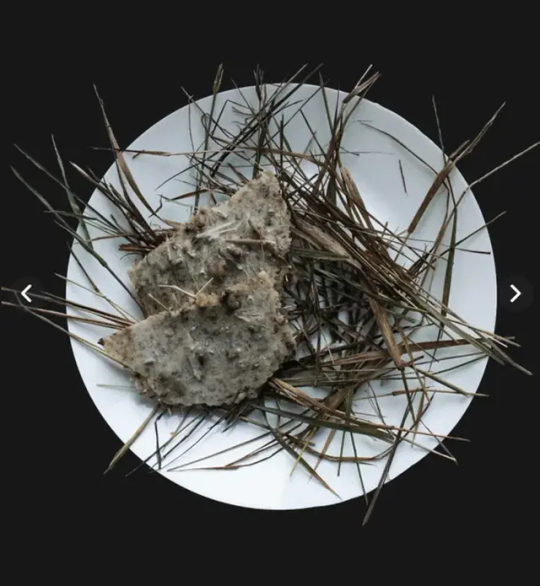
The peasants dried the husked ears of corn and millet husks, pounded them, ground them with weeds, and cooked soups and baked pancakes. Such dishes were impossible to chew, the body could not digest them, so people had stomach aches. Pancakes, the so-called "matorzhenyky", were made from oilcake and nettle or plantain.
It went so far that peasants would crumble straw into small chips and pound it in a mortar together with millet and buckwheat chaff, and tree bark. All this was mixed with potato peelings, which were very poisonous, and this mixture was used to bake "bread", the consumption of which caused severe stomach diseases.
There were cases when village activists took away and broke millstones, mortars, poured water on the heat in their ovens. After all, anything found or saved from the food had to be cooked on fire, and matches could only be purchased by bartering for their own belongings or by buying them in the city, which was impossible from villagers that were on "black lists".
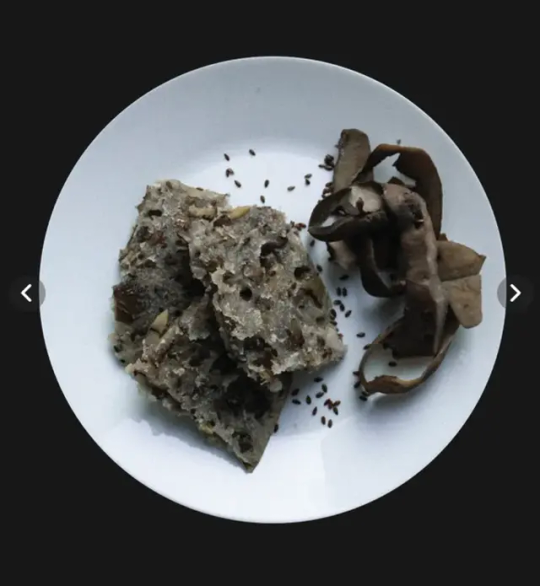
Chestnuts, aspen and birch bark, buds, reed roots, hawthorn and rose hips, which were the most delicious, were used as food substitutes; various berries, even poisonous ones, were picked; grass seeds were ground into flour; "honey" from sugar beets was cooked, and water brewed with cherry branches was drunk. They also ate the kernels of sunflower seeds.
Newborns had the worst of it, because their mothers had no breast milk. According to testimonies, a mother would let her child suck the drink from the top of the poppy head, and the child would fall asleep for three days.
In early spring, the villagers began to dig up old potato fields. They would bake dumplings from frozen potatoes, grind rotten potatoes in a mash and make pancakes, greasing the frying pan with wheel grease. They also baked "blyuvaly" (transl. "vomities") from such potatoes and oatmeal mixed with water, which was so called because they were very smelly.

They ate mice, rats, frogs, hedgehogs, snakes, beetles, ants, worms, i.e. things that weren't a part of food bans and had never been eaten by people before. The horror of the famine is also evidenced by the consumption of spiders, which are forbidden to kill in Ukrainian society for ritual reasons.
In some areas, slugs were boiled into a soup, and the cartilaginous meat was chopped and mixed with leaves. This prevented swelling of the body and contributed to survival. People caught tadpoles, frogs, lizards, turtles, and mollusks. They boiled them, adding a little salt if there was salt. The starving people caught cranes, storks, and herons, which have been protected in Ukraine for centuries, and their nests were never destroyed. According to folk beliefs, eating stork meat was equated with cannibalism.
The consumption of horse meat began in 1931, before the mass famine. People used to take dead horsemeat from the cemeteries at night, make jelly out of it and salt it for future use.
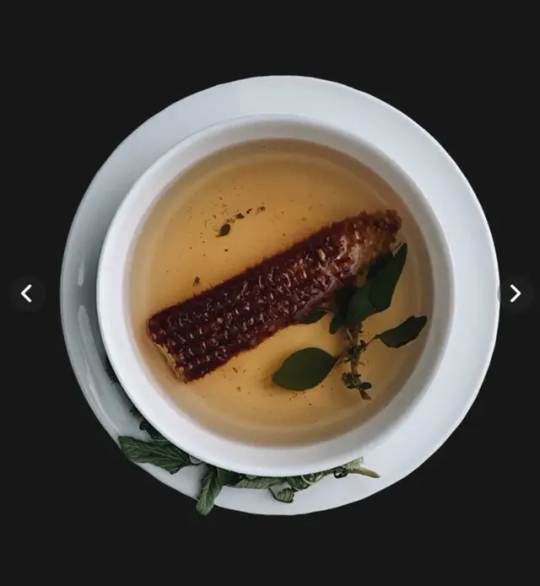
Dead horses were poured with carbolic acid to prevent people from taking their meat, but it hardly stopped anybody. Dead collective farm pigs were also doused with kerosene to prevent people from dismantling them for food, but this did not help either.
After long periods of starvatiom, the process of digestion is very costing for the human body, and many people who would eat anything would drop dead immediately out of exhaustion.
If a family had a cow hidden somewhere in the forest, they had a chance to survive. People living near forests could hunt/seek out berries and mushrooms, but during winter this wouldn't save them. People living near rivers could fish in secret, but it was banned and punishable by imprisonment/death.
707 notes
·
View notes
Text
Intro - whoami
Salutations? I am necrotech-puppywitch aka morrogos aka Morrigan. Currently living the cyberpunk life (surviving off of "contracting" remotely while studying two degrees and running all my stuff off of salvaged and resurrected tech while still barely paying for rent and fighting my cornucopia of demons).
Note: I CANT DONATE IM BARELY GETTING BY MYSELF
TERFS FUCK OFF TO HELL
Blm, 🇵🇸, Trans rights are human rights, fuck capitalism, fuck fascism, fuck right wing bullshit, abolish ALL borders, healthcare is a human right not a business model
I use Arch btw (custom hardened kernel) with Hyprland because GET GOOD
>blog - this blog is my personal blog, sometimes i do horny posting/ reblogging, usually just random pictures and thoughts from day to day life, occassionally an essay or a poem or a snippet of something I am working on (could be art, could be journalling, could be code, who knows)
> pronouns - she/ they/ it
>id - trans femme demisexual poly sapphic leaning nonbinary creature of the night waiting to rip out your throat :3
>autistic? Very
>music - Dazey and the Scouts, Avril Lavigne, Night Tapes, carolesdaughter, GRLwood, Destroy Boys, chloe moriondo, Halsey, Jazmin Bean, KiNG MALA, Leanna Firestone, Paramore, PERTUBATOR, Pretty Sick, Poppy, Mommy Long Legs, Bikini Kill, Royal & the Serpent, Sir Chloe, Skating Polly, TAELA, awfultune, Rare Americans, dacelynn, Mountain Goats, Penelope Scott, wallows, cavetown, ethel cain, Bloodwitch, Atlas Ivy
>intr - fungi, digital art, computers, diy tech, resurrecting dead computers from the dump (every device I own is either one ive repaired from there or something 3rd or 4th hand), capture the flags, args, piracy, philosophy, poetry, cozy horror writing, books, bug bounties, maldev, old books (I love old book smell), FOSS, making synth music, old b grade horror movies, cozy horror, furry stuff
>fvfds - sushi, karage chicken, chicken nuggies, baguettes, cheese melts, mie goreng noodles, brisket
>fvmedia - Scoobey Doo Mystery Incorporated (animated show), Harley Quinn (the 2019 show), She-Ra and the Princesses of Power (2018), LOONEY TUNES MY BELOVED!, Creature from the Black Lagoon, Gravity Falls, Rick and Morty (I know I know it sucks whatever), Watchmen, literally anything Studio Ghibli, Serial Experiments Lain (she just like me fr), wargames (both movies, the dead code is a comedy and underrated), Lisa Frankenstein, Strange Darling (LITERALLY GOALS), Hilda, Atomic Blonde, TRON Legacy, House on Haunted Hill (the original), Re-Animator (he did nothing wrong fr fr), the Fear Street Trilogy (the lighting is delicious!), Pantheon, ARE YOU AFRAID OF THE DARK? (I grew up on the 90s series, love it), Black Lagoon, Guillermo Del Torro's Cabinet of Curiosities, Dracula (1931, Bella Legosi is amazing), all the scream movies (yes they are terrible, I love them for it), Atlantis (the disney one, I just like the aesthetics of and the submarine is so so cool it just tickles my brain right), gingersnaps, the creepshow trilogy, the owl house, Sky Captain and the World of Tomorrow, psycho, series of unfortunate events, I am not okay with this, goonies, the iron giant, Ulysses 31, Last Night in Soho
>vgmes - Faith: The Unholy Trinity, Minecraft, CS2 (I miss csgo, cs2 is worse, I also miss the old overwatch), Stardew Valley, Cyberpunk 2077, Orwell, Oneshot, Party Hard, Fallout New Vegas, Fallout 4, Payday 2, Life Is Strange, The Sims 4, Crusader Kings 2, CELESTE MY BELOVED (that made me cry TwT), Mother Russia Bleeds,
>fvprintmedia - courtney crumrin, goosebumps horrorland, the amulet series, the domino comics, the graveyard book, tales of the cthulhu mythos, the sandman comics (the 40s and 50s one, I have a mega edition with all the comics of the old sandman), the phantom of the opera, wuthering heights, the mysterious island, the Fall of the House of Usher, the picture of dorian grey, bodies from the library, psycho, series of unfortunate events,
> ask me about? Anything, i am so so bored please interact with me
> colours - greens, purples, lots of black, pastel pinks, but mainly blacks
>will I break your knee caps? Yes, yes I will. I am a violence enjoyer and a massive masochist
>I reallly hate going to the vet TwT
25 notes
·
View notes
Text
Demeter Devotional Acts and Offerings
Devotional Acts
Cook a meal/Bake
Forage
Go to a corn field/corn maze
Tend to a garden
Keep indoor plants
Join a community garden
Volunteer/work on a farm
Honor the seasons
Watch the leaves fall mindfully
Pick up litter
Pray before meals
Learn your local fauna, flowers, and wooded areas
Volunteer at food banks
Access food pantries/other resources if you need them
Keep a recipe book
Take a hike
Donate food
Plant local wildflowers
Shop locally
Learn what crops your state/area specializes in
Eat healthy (for your body! This looks different for everyone!)
Bake bread
Make beer
Harvest fruits/vegetables
Play farming simulation games
Tour a farm
Eat mindfully
Learn the life cycles of various crops, plants, and trees
Have a community/family meal
Stick to a grocery budget
Make flower crowns
Offerings
Fruits/vegetables
Beer
Barley
Wheat
Rice
Corn
Herbs
Gourds
Squashes
Cereals
Popcorn kernels
Quinoa
Rye/rye bread
Buckwheat
Cuscus
Dry pastas
Seeds
Flowers
Grass
Flour
Sugar
Poppies
Oats/oatmeal
Farm equipment/souvenirs
Farm animal imagery/products
Horse imagery
Autumn/harvest imagery
Pumpkin scented items
Golden objects
Swords/sickles/axes imagery
Snake skin
Flower crowns
Leaves
Homemade baked goods/meals
49 notes
·
View notes
Text


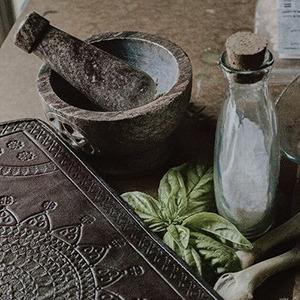


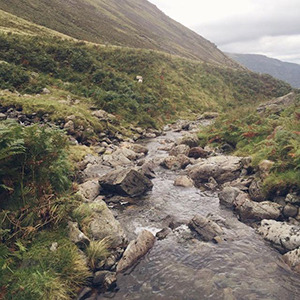
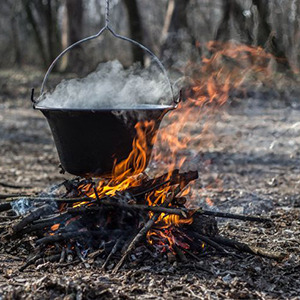


Cerridwen
Deity Of: Magic, wisdom, transformation, poetry, creativity, herbalism Animals: white pig, crow, hen, hare Crystals: moonstone, selenite Herbs & Trees: vervain, wheat, barley, oak, poppy Favorite Offerings: grains, acorns, pork, vervain leaves Symbols: Cauldron, white sow, grain
Cerridwen was an enchantress from Welsh legend and the mother of a beautiful daughter, Creirwy, and a hideous son, Morfran. Cerridwen knew that her son would never be accepted because of his looks, so she sought to make a potion that would make him the wisest man alive in compensation.
She began to brew a potion in her magical cauldron that would grant her son the gift of wisdom and poetic inspiration, also called Awen. The potion had to brew for a year and a day, so she set a blind man named Morda to tend the fire, and a young boy named Gwion Bach to stir the potion. Once completed, the first three drops would grant the gift of Awen and the rest was fatal poison.
On the final day of the brewing, when the potion was ready, the boy spilled three drops of it onto his thumb. Instinctively, he put his thumb in his mouth to sooth the burn, thus consuming the wisdom and inspiration meant for Morfran. Understanding what he had done, Gwion Bach fled to avoid Cerridwen's anger.
She gave chase, and using the powers of the potion, Gwion Bach attempted to elude her by transforming into a series of animals. He became a hare and Cerridwen became a greyhound. He became a salmon and jumped into the river, and she became an otter. He became a sparrow and she became a hawk. Finally, he turned into a single kernel of corn and Cerridwen turned into a hen and ate him.
Because of the potion, he was not destroyed and instead Cerridwen became pregnant. She vowed to kill him when he was born, but the baby was so beautiful that she could not bring herself to do it. Instead, she placed the baby in a coracle and pushed him out to sea. He was rescued on the Welsh shore by a prince and grew up to become the legendary bard, Taliesin.
#witchcraft#witch aesthetic#witchy vibes#witchy things#witchblr#deity work#deity worship#polytheism#celtic witchcraft#celtic polytheism#cerridwen
99 notes
·
View notes
Text
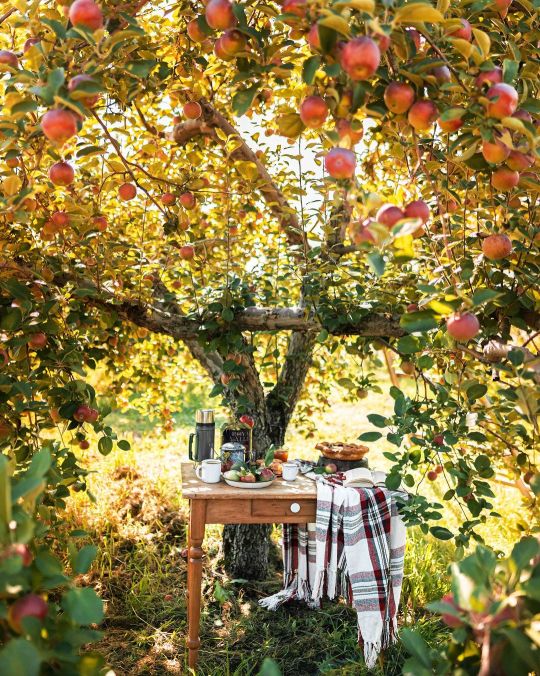
countryhomemagazine
"To Autumn" by John Keats
Season of mists and mellow fruitfulness,
Close bosom-friend of the maturing sun;
Conspiring with him how to load and bless
With fruit the vines that round the thatch-eves run;
To bend with apples the moss’d cottage-trees,
And fill all fruit with ripeness to the core;
To swell the gourd, and plump the hazel shells
With a sweet kernel; to set budding more,
And still more, later flowers for the bees,
Until they think warm days will never cease,
For summer has o’er-brimm’d their clammy cells.
Who hath not seen thee oft amid thy store?
Sometimes whoever seeks abroad may find
Thee sitting careless on a granary floor,
Thy hair soft-lifted by the winnowing wind;
Or on a half-reap’d furrow sound asleep,
Drowsed with the fume of poppies, while thy hook
Spares the next swath and all its twined flowers:
And sometimes like a gleaner thou dost keep
Steady thy laden head across a brook;
Or by a cider-press, with patient look,
Thou watchest the last oozings, hours by hours.
Where are the songs of Spring? Ay, where are they?
Think not of them, thou hast thy music too,—
While barred clouds bloom the soft-dying day,
And touch the stubble-plains with rosy hue;
Then in a wailful choir the small gnats mourn
Among the river sallows, borne aloft
Or sinking as the light wind lives or dies;
And full-grown lambs loud bleat from hilly bourn;
Hedge-crickets sing; and now with treble soft
The redbreast whistles from a garden-croft,
And gathering swallows twitter in the skies.
#john keats to autumn#john keats poetry#john keats#autumn poem#autumn atmosphere#autumn aesthetic#autumn colors#autumn nature#country autumn'#fall season#country living#autumn garden#cozy cottage life#country aesthetic#cottage garden
146 notes
·
View notes
Text
JOHN KEATS “To Autumn”
Season of mists and mellow fruitfulness Close bosom-friend of the maturing sun Conspiring with him how to load and bless With fruit the vines that round the thatch-eves run; To bend with apples the moss’d cottage-trees, And fill all fruit with ripeness to the core; To swell the gourd, and plump the hazel shells With a sweet kernel; to set budding more, And still more, later flowers for the bees, Until they think warm days will never cease, For Summer has o'er-brimm’d their clammy cells. Who hath not seen thee oft amid thy store? Sometimes whoever seeks abroad may find Thee sitting careless on a granary floor, Thy hair soft-lifted by the winnowing wind; Or on a half-reap’d furrow sound asleep, Drows’d with the fume of poppies, while thy hook Spares the next swath and all its twined flowers: And sometimes like a gleaner thou dost keep Steady thy laden head across a brook; Or by a cider-press, with patient look, Thou watchest the last oozings hours by hours. Where are the songs of Spring? Ay, where are they? Think not of them, thou hast thy music too,– While barred clouds bloom the soft-dying day, And touch the stubble-plains with rosy hue; Then in a wailful choir the small gnats mourn Among the river sallows, borne aloft Or sinking as the light wind lives or dies; And full-grown lambs loud bleat from hilly bourn; Hedge-crickets sing; and now with treble soft The red-breast whistles from a garden-croft; And gathering swallows twitter in the skies.
2 notes
·
View notes
Text

To Autumn-John Keats
Season of mists and mellow fruitfulness,
Close bosom-friend of the maturing sun;
Conspiring with him how to load and bless
With fruit the vines that round the thatch-eves run;
To bend with apples the moss'd cottage-trees,
And fill all fruit with ripeness to the core;
To swell the gourd, and plump the hazel shells
With a sweet kernel; to set budding more,
And still more, later flowers for the bees,
Until they think warm days will never cease,
For summer has o'er-brimm'd their clammy cells.
Who hath not seen thee oft amid thy store?
Sometimes whoever seeks abroad may find
Thee sitting careless on a granary floor,
Thy hair soft-lifted by the winnowing wind;
Or on a half-reap'd furrow sound asleep,
Drows'd with the fume of poppies, while thy hook
Spares the next swath and all its twined flowers:
And sometimes like a gleaner thou dost keep
Steady thy laden head across a brook;
Or by a cyder-press, with patient look,
Thou watchest the last oozings hours by hours.
Where are the songs of spring? Ay, Where are they?
Think not of them, thou hast thy music too,—
While barred clouds bloom the soft-dying day,
And touch the stubble-plains with rosy hue;
Then in a wailful choir the small gnats mourn
Among the river sallows, borne aloft
Or sinking as the light wind lives or dies;
And full-grown lambs loud bleat from hilly bourn;
Hedge-crickets sing; and now with treble soft
The red-breast whistles from a garden-croft;
And gathering swallows twitter in the skies.
7 notes
·
View notes
Text
To Autumn
John Keats
Season of mists and mellow fruitfulness,
Close bosom-friend of the maturing sun;
Conspiring with him how to load and bless
With fruit the vines that round the thatch-eves run;
To bend with apples the moss'd cottage-trees,
And fill all fruit with ripeness to the core;
To swell the gourd, and plump the hazel shells
With a sweet kernel; to set budding more,
And still more, later flowers for the bees,
Until they think warm days will never cease,
For summer has o'er-brimm'd their clammy cells.
Who hath not seen thee oft amid thy store?
Sometimes whoever seeks abroad may find
Thee sitting careless on a granary floor,
Thy hair soft-lifted by the winnowing wind;
Or on a half-reap'd furrow sound asleep,
Drows'd with the fume of poppies, while thy hook
Spares the next swath and all its twined flowers:
And sometimes like a gleaner thou dost keep
Steady thy laden head across a brook;
Or by a cyder-press, with patient look,
Thou watchest the last oozings hours by hours.
Where are the songs of spring? Ay, Where are they?
Think not of them, thou hast thy music too,—
While barred clouds bloom the soft-dying day,
And touch the stubble-plains with rosy hue;
Then in a wailful choir the small gnats mourn
Among the river sallows, borne aloft
Or sinking as the light wind lives or dies;
And full-grown lambs loud bleat from hilly bourn;
Hedge-crickets sing; and now with treble soft
The red-breast whistles from a garden-croft;
And gathering swallows twitter in the skies.
#classic poetry#Season of mists and mellow fruitfulness#bend with apples the moss'd cottage-trees#Until they think warm days will never cease#Drows'd with the fume of poppies#While barred clouds bloom the soft-dying day
0 notes
Photo

Dana Cree’s Popcorn Ice Cream Recipe: A Unique Flavor Experience https://itsafabulouslife.com/dana-crees-popcorn-ice-cream-recipe-a-unique-flavor-experience/ Dana Cree is known for her innovative gourmet ice cream creations. Her popcorn ice cream recipe blends buttered popcorn flavour with creamy sweetness. This unique dessert started as a birthday surprise for her partner's mother.Cree's pastry chef background and time at Poppy restaurant shaped this remarkable dessert. She expertly balances buttery, salty popcorn notes with rich, creamy ice cream sweetness.The key to Cree's popcorn ice cream is her careful technique. She pops corn kernels in clarified butter, infusing flavours into the cream base. This step captures the authentic buttered popcorn taste in the ice cream mixture.The result is a delightful dessert that showcases homemade ice cream's versatility. It offers an unexpected twist on traditional popcorn-flavoured treats.The Story Behind Dana Cree's Innovative Ice Cream CreationDana Cree has revolutionised ice cream making with her unique approach. Her cookbook, "Hello, My Name is Ice Cream," won the 2018 International Association
0 notes
Text
Moroccan Natural Beauty Products – A Timeless Secret for Radiant Skin

Morocco is renowned for its natural beauty secrets, passed down through generations. From the exotic scents of Aker Fassi to the deep nourishment of argan oil, Moroccan beauty products are made from pure, organic ingredients that enhance skin and hair naturally.
Why Choose Moroccan Natural Beauty Products?
🌿 100% Natural & Organic – Free from harsh chemicals and made with plant-based ingredients. 💆♀️ Deep Nourishment – Packed with essential nutrients for skin and hair. ✨ Multi-Purpose Use – Many Moroccan natural beauty products offer benefits for both skincare and haircare. 🕌 Cultural Heritage – Traditional recipes handcrafted using age-old techniques.
Popular Moroccan Beauty Products & Their Benefits
🌿 Argan Oil – "Liquid Gold"
Extracted from the kernels of the argan tree, this deeply hydrating oil is packed with Vitamin E and fatty acids, making it perfect for moisturizing skin, reducing wrinkles, and adding shine to hair.
💄 Aker Fassi (Moroccan Lipstick & Blush)
Made from poppy flower petals and pomegranate peel, Aker Fassi provides a long-lasting, natural tint for lips and cheeks while offering antioxidant benefits.
🧖♀️ Rhassoul Clay – The Ultimate Detox
This mineral-rich volcanic clay is used in face masks and hair treatments to remove impurities, tighten pores, and improve skin elasticity.
🛁 Black Soap (Beldi Soap)
A natural exfoliating soap made from olive oil and eucalyptus, it deeply cleanses and preps the skin for a Moroccan Hammam experience.
🍯 Rose Water – The Skin Refresher
Extracted from Damask roses, Moroccan rose water soothes, hydrates, and tones the skin while giving a refreshing glow.
🐝 Moroccan Honey & Beeswax Skincare
Used in traditional remedies, Moroccan honey is rich in antibacterial and healing properties, making it an essential ingredient for hydrating and repairing the skin.
Experience the Magic of Moroccan Beauty
Embrace the power of nature and tradition with Moroccan natural beauty products. Whether you’re looking for hydration, anti-aging, or skin purification, these products offer a chemical-free, holistic approach to beauty.
1 note
·
View note
Text
MRE menu of choice:
For this project, MREs follow the 2021 MRE menu plan outlined here: https://www.mreinfo.com/mre-menus-2021/
Due to the lack of notable name-brand candies, the in-setting options are as follows (Only look through if you don't want to just go through the site, and replace name brands with a description):
Menu 1:
Chili with Beans Cheddar Cheese Spread Vegetable Crackers Cornbread Pepperoni Pizza Cheese Filled Crackers Carb-Fortified Grape Beverage Powder A
Menu 2:
Shredded Beef in Barbecue Sauce Apple, Strawberry, and Carrot Fruit Puree Squeeze Jalapeño Cheddar Cheese Spread Tortillas Cinnamon Bun Chocolate Hazelnut Protein Drink Powder B
Menu 3:
Chicken, Egg Noodles, and Vegetables in Sauce Applesauce with Raspberry Puree Crackers Peanut Butter Apple Jelly Fruit-flavored sugar candies Carb-Fortified Tropical Punch Beverage powder Powdered Hot Sauce A
Menu 4:
Spaghetti with Beef and Sauce Chocolate Chip Toaster Pastry Cheddar Cheese Spread Italian Bread Sticks Dried Raisins Chocolate Hazelnut Protein Drink Powder Sugar-Free Lemonade Beverage Base B
Menu 5:
Chicken Chunks Apple Cinnamon Pastry Bar Cheddar Cheese Spread Tortillas Toasted Corn Kernels, Barbecue Teriyaki Beef Sticks Carb and Electrolyte-Fortified Fruit Punch Beverage Powder Barbeque Sauce B
Menu 6:
Beef Taco Filling Santa Fe Rice and Beans Cheddar Cheese Spread Tortillas, Whole Grain Nut, Fruit, and Chocolate Trail Mix Sugar-Free Orange Beverage Base A
Menu 7:
Beef Strips in Tomato Sauce Chocolate Pudding Peanut Butter White Wheat Snack Bread Blackberry Preserves Peppermint Candy Rings Tropical Blend Fruit and Vegetable Smoothies B
Menu 8:
Meatballs in Marinara Sauce Cherry, Blueberry Cobbler Chocolate Chip Cookie Jalapeno Cheddar Cheese Spread Italian Bread Sticks Teriyaki Beef Sticks Carb and Electrolyte-Fortified Orange Beverage Powder B
Menu 9:
Beef Stew Vanilla Pound Cake Multigrain Snack Bread Peanut Butter Grape Jelly Sour Fruit-flavored sugar candies Carb-Fortified Lemon-Lime Beverage Powder 4 Packets of Extra Hot Hot Sauce A
Menu 10:
Chili and Macaroni Lemon Poppy Seed Pound Cake Jalapeno Cheddar Cheese Spread Vegetable Crackers Teriyaki Beef Sticks Cherry Twizzlers, Bit Size Carb and Electrolyte Orange Beverage Powder 4 Packets of Extra Hot Hot Sauce B
Menu 11:
Cheese Pizza Slice Carb-Fortified Applesauce Chocolate Pastry Bar Chunky Peanut Butter Crackers Jalapeno Cashews Lemon-Lime Beverage Base Crushed Red Pepper A
Menu 12:
Elbow Macaroni in Tomato Sauce Barbecue Protein Puffs Applesauce with Mango and Peach Puree Peanut Butter Strawberry Preserves Itty Bitty Loaf of Whole Wheat Bread Chocolate Protein Drink Powder Crushed Red Pepper A
Menu 13:
Cheese Tortellini in Tomato Sauce Dry Roasted Peanuts Chocolate Peanut Spread Crackers Trail Mix Carb and Electrolyte-Fortified Lemon-Lime Beverage Powder Crushed Red Pepper B
Menu 14:
Mexican Rice and Bean Bowl Cranberry-Raspberry Pastry Bar Peanut Butter Crackers Honey Mustard Pretzel Nuggets Chocolate Protein Drink Powder Powdered Hot Sauce A
Menu 15:
Mexican Style Chicken Stew Banana and Pumpkin Fruit Puree Squeeze Cheddar Cheese Filled Pretzels Jalapeno Cheddar Cheese Spread Crackers Chocolate Pastry Bar Spice Blend B
Menu 16:
Chicken Burrito Bowl Trail Mix Chocolate Chip Toaster Pastry Whole Grain Tortillas Cheddar Cheese Spread Powdered Hot Sauce Carb-Fortified Orange Beverage Powder B
Menu 17:
Maple Pork Sausage Patty Hash Brown Potatoes with Bacon, Peppers, and Onions Granola with Milk and Blueberries Maple Muffin Top Smoked Almonds Carb and Electrolyte-Fortified Grape Beverage Powder Maple Syrup A
Menu 18:
Beef Ravioli in Meat Sauce Salted Caramel Marshmallow Crisp Bar Cheddar Cheese Spread Italian Bread Sticks Chocolates Carb and Electrolyte-Fortified Fruit Punch Beverage Powder 4 Packets of Extra Hot Hot Sauce B
Menu 19:
Jalapeno Pepper Jack Beef Patty, Grilled Au Gratin Potatoes Chocolate Chunk Oatmeal Cookies Bacon Cheddar Cheese Spread Tortillas Peanut Chocolates Sugar-Free Orange Beverage Base Barbeque Sauce Mayonanaise A
Menu 20:
Italian Sausage with Peppers and Onions in Marinara Sauce Trail Mix and Jerky Dried Cranberries Cheddar Cheese Spread Crackers Dry Roasted Peanuts Sugar-Free Orange Beverage Base A
Menu 21:
Lemon Pepper Tuna Marble Pound Cake Cheddar Cheese Spread Tortillas Cheddar Baked Snack Crackers Carb Fortified Lemon-Lime Beverage Powder Peanut Chocolates Mayonnaise B
Menu 22:
Beef Goulash Carb Fortified Applesauce Chunky Peanut Butter Strawberry Preserves Itty Bitty Loaf of Whole Wheat Bread Patriotic Sugar Cookies Carb-Fortified Orange Beverage Powder B
Menu 23:
Pepperoni Pizza Slice Apples in Spiced Sauce Jalapeno Cheddar Cheese Spread Vegetable Crackers Oatmeal Cookie Chocolate Protein Drink Powder Lemonade Beverage Base A
Menu 24:
Southwest Style Beef and Black Beans with Sauce Cherry Blueberry Cobbler Applesauce Pound Cake Teriyaki Beef Sticks Cheddar Cheese Spread Chipotle Tortillas Lemon-Lime Beverage Base A
A:
Coffee, Creamer, Sugar, Towelette, Salt
B:
Matches, Towelette, Salt
1 note
·
View note
Text
Flower plates

Sweet Rose Omelette Ingredients (serves four) 6 eggs, 2 tablespoons of sugar, 10 mint leaves, 3 roses, 2 tablespoons of extra virgin olive oil.
Preparation Beat the eggs with the sugar. Cut the rose petals into strips, chop the mint, and add everything to the eggs. Cook an omelette in a non-stick pan, preferably greased with oil. Decorate it with rose petals and mint leaves.
Wildflower Salad Ingredients 100g (3.5 oz) lettuce, 100g (3.5 oz) of a small zucchini, and a carrot cut into very thin strips, 3 tablespoons of corn kernels, two handfuls of wildflower petals (poppies, cornflowers, daisies), salt, oil, lemon, and chili.
Preparation Wash the vegetables and dry them. Season them with oil, lemon juice, salt, and chili. Mix well. Wash the petals and let them dry between two cloths. Decorate the salad with the petals before serving.
Violets in Syrup Ingredients Fresh violets, cane sugar, 1 egg, 1 pastry brush.
Preparation Remove the stems from the violets. Dip the pastry brush in egg white and paint the flowers. Cover the violets with cane sugar. Place them on a rack to drain well. After half an hour, the violets will be hard and ready to eat. You can store them in airtight glass jars. They are perfect for decorating cakes and ice creams!
1 note
·
View note
Text
TO AUTUMN Season of mists and mellow fruitfulness, Close bosom-friend of the maturing sun; Conspiring with him how to load and bless With fruit the vines that round the thatch-eves run; To bend with apples the moss'd cottage-trees, And fill all fruit with ripeness to the core; To swell the gourd, and plump the hazel shells With a sweet kernel; to set budding more, And still more, later flowers for the bees, Until they think warm days will never cease, For summer has o'er-brimm'd their clammy cells.
Who hath not seen thee oft amid thy store? Sometimes whoever seeks abroad may find Thee sitting careless on a granary floor, Thy hair soft-lifted by the winnowing wind; Or on a half-reap'd furrow sound asleep, Drows'd with the fume of poppies, while thy hook Spares the next swath and all its twined flowers: And sometimes like a gleaner thou dost keep Steady thy laden head across a brook; Or by a cyder-press, with patient look, Thou watchest the last oozings hours by hours.
Where are the songs of spring? Ay, Where are they? Think not of them, thou hast thy music too,— While barred clouds bloom the soft-dying day, And touch the stubble-plains with rosy hue; Then in a wailful choir the small gnats mourn Among the river sallows, borne aloft Or sinking as the light wind lives or dies; And full-grown lambs loud bleat from hilly bourn; Hedge-crickets sing; and now with treble soft The red-breast whistles from a garden-croft; And gathering swallows twitter in the skies.
John Keats

1 note
·
View note